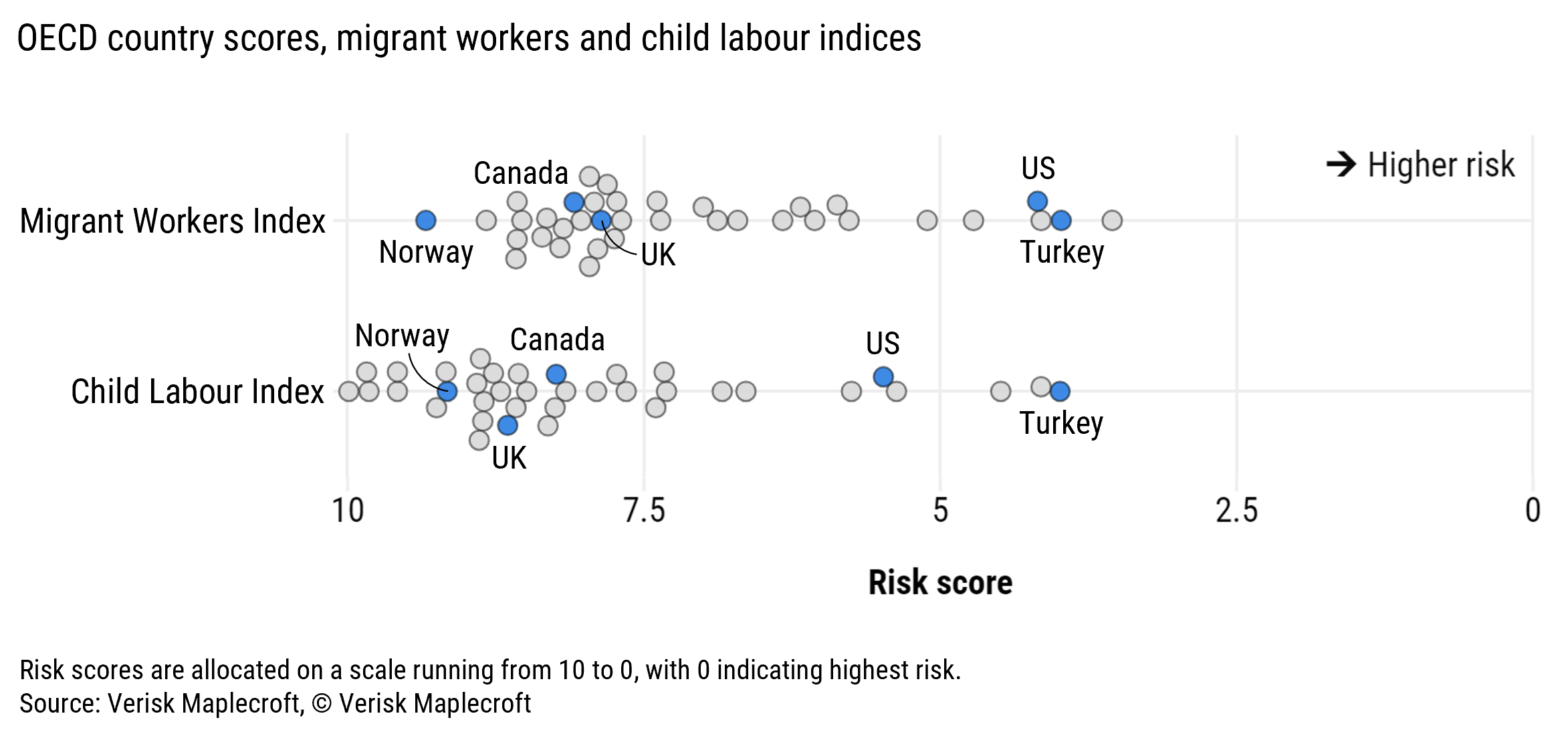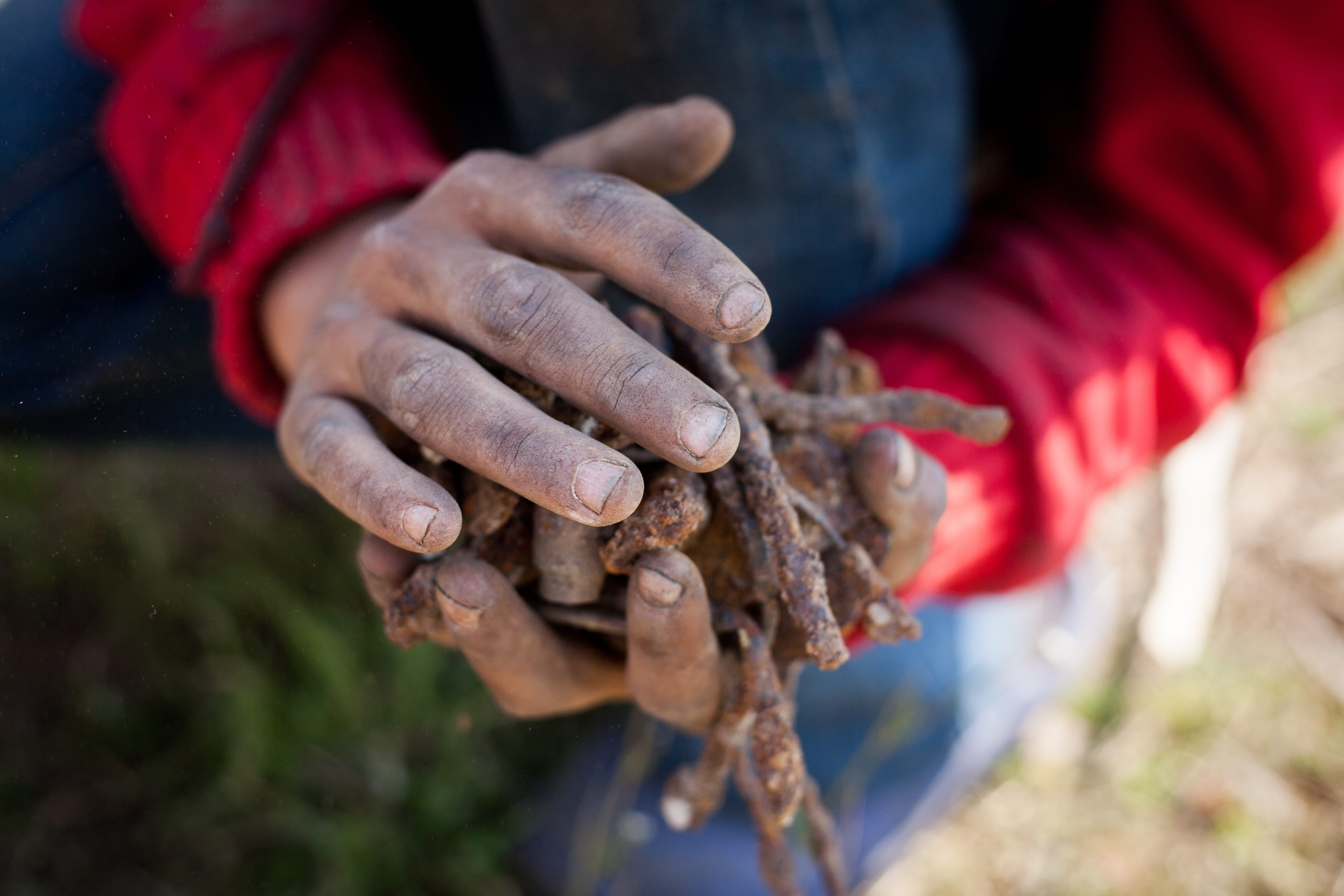Child labour, migrant worker risks rising fastest in US
The Trendline
by Jess Middleton,
Child labour and risks to migrant workers have surged faster in the US over the past two years than in any other nation, raising new reputational and sustainable procurement concerns for companies operating in or sourcing from the country.
Data from our Child Labour Index shows that the US has seen the largest increase in risk for the issue globally since 2022. Its performance has also significantly deteriorated on our Migrant Workers Index, which measures risks to migrant workers’ rights in 198 countries – only Morocco registered a larger decline in its score.
The findings coincide with a sharp rise in the number of migrants entering the US. At least 2.4m people – including around 140,000 unaccompanied children – attempted to cross the southern US border in 2023 alone.
Migration into the US is being driven by a number of factors, including economic instability, violence and the rising impacts of climate change in places like Venezuela, Guatemala, Honduras and Haiti. Our analysis shows those that successfully make it into the country are increasingly vulnerable to exploitation in sectors such as agriculture and manufacturing, which has the potential to taint supply chains for consumer goods.
Figure 1: Threats to child and migrant workers have risen sharply in the US
Breaches of labour rights rising as protections come under strain
Our human rights indices are based on the UN’s ‘structure-process-outcome’ configuration, and measure the strength, enforcement and infringement of labour rights laws globally. Digging into the data shows that the US underperforms on several measures related to the implementation of child labour and migrant workers’ rights protections.
It receives a high risk rating for both the adequacy of its preventative child labour programmes and the enforcement of workplace discrimination laws. At the same time, several US states have sought to roll these protections back in recent years. Indeed, 31 states have introduced bills aimed at weakening safeguards for child workers since 2021, according to research published by the Economic Policy Institute, a Washington-based think tank.
This has coincided with a surge in breaches of labour rights, with the US Department of Labor (DOL) reporting that it found nearly 5,800 children employed in violation of the law in fiscal year 2023, an 88% increase from 2019.
This is corroborated by trend data from our in-house events feed, which utilises data science and machine learning techniques to classify news reports and forms part of the underlying data used to build our subnational labour rights indices.
The data shows a significant increase in reports related to child labour in 2023 compared to 2022, with incidents rising by more than 90%. Iowa, which recently passed a law allowing children to work longer hours and in more dangerous jobs, saw the highest number of events. Reports related to breaches of migrant workers’ rights have also risen, with 44% more incidents recorded in 2023 than 2022.
Agriculture, where migrant labourers – including children – make up a large share of the US workforce, ranks as the highest risk sector for both issues within our Industry Risk Analytics dataset. Other high risk industries include manufacturing, electrical work and meat processing. Indeed, in February last year the DOL announced it had found over a hundred migrant children working in meat processing facilities in eight states, often undertaking dangerous work on overnight shifts. The owner was forced to pay a USD1.5m civil fine.
US increasingly out of step among wealthy nations
It is important to note that the US is far from the worst performing country on either our child labour or migrant workers indices, with nations such North Korea, Somalia and Eritrea topping the rankings. However, the data highlights a significant and growing divergence between the US and its Western peers.
The US now ranks 87th highest risk on our Migrant Workers Index, down from 127th in 2022. By way of comparison, the UK, which has itself faced scrutiny over its treatment of migrant workers post-Brexit, ranks 174th, while Canada ranks 182nd. On our Child Labour Index the US ranks 125th highest risk, down from 148th two years ago, receiving a higher risk score than the likes of Georgia and Serbia.
The chart below, which focuses on the 37 member states of the OECD, considered a leading forum for rich democracies, highlights the extent of the divide. The US ranks 4th highest risk in the cohort for migrant workers’ rights, behind Israel, Turkey and Mexico, and 5th highest risk for child labour, demonstrating the growing deficit between the US and other wealthy economies when it comes to its performance on labour rights issues.
Labour rights a growing concern for companies with US exposure
The data indicates that the challenges posed by the migrant crisis, coupled with the evolving political and legal environment surrounding migration in the US, are impacting human rights protections and labour standards in key sectors.
“Companies operating in the US need to be aware of these dynamics when considering their operating and supply chain environments, particularly given the expanding the raft of regulations governing supply chain due diligence,” notes Dr James Sinclair, our Director of Human Rights. “Without more consistent enforcement, corporate protocols traditionally used for mitigating risk when sourcing or operating in emerging markets may need to be considered for the US.”


